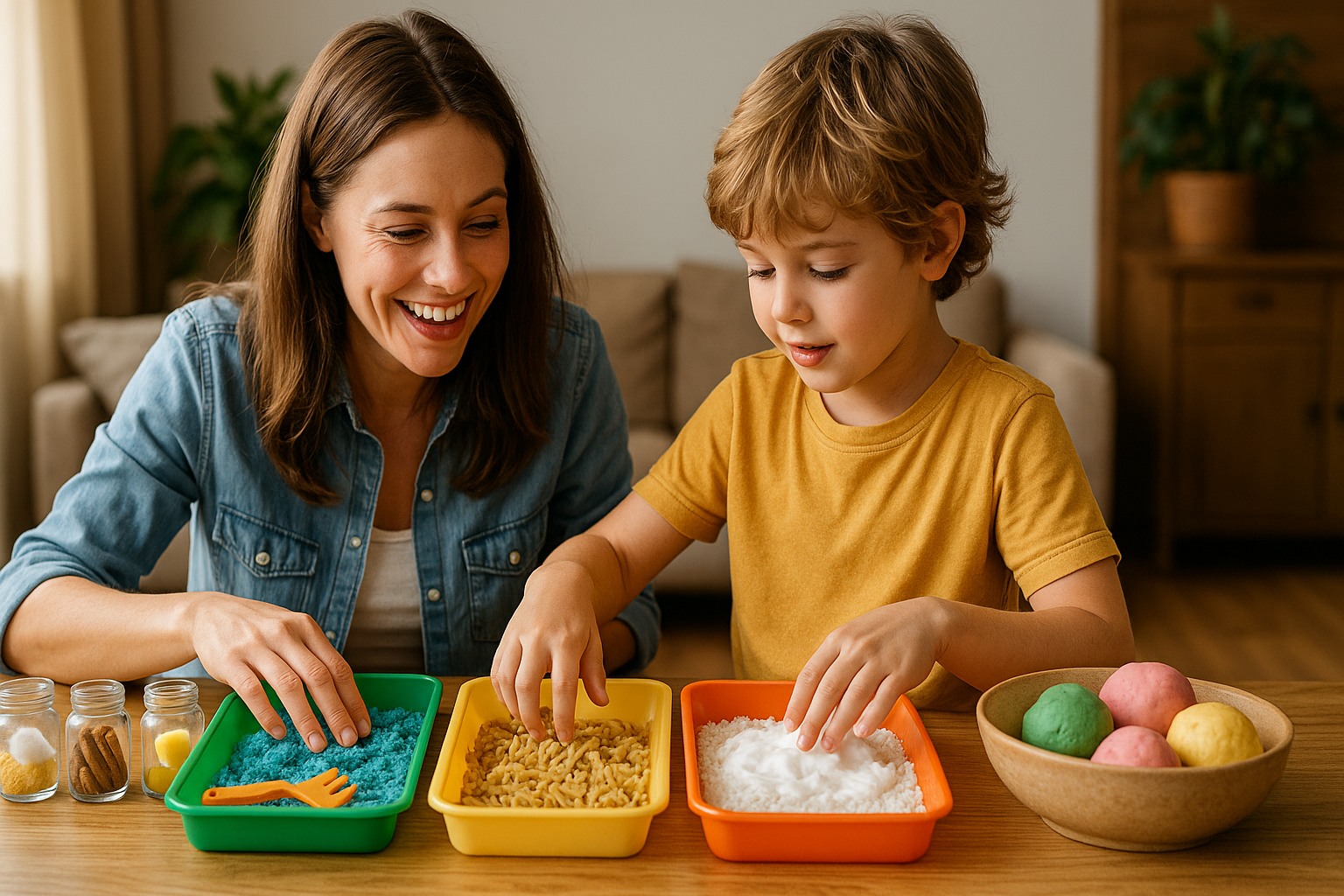Teaching the five senses — sight, hearing, taste, touch, and smell — is one of the most engaging ways to introduce children to how their bodies interact with the world. For preschool and early primary-aged children, sensory education is both foundational and fun. It not only builds vocabulary and curiosity but also supports cognitive, social, and emotional development.
Here’s how to bring each sense to life at home using easy, hands-on activities.
Why Teaching the Five Senses Matters
Understanding the five senses helps children:
- Make sense of their environment
- Improve focus and memory
- Develop descriptive language
- Build awareness and mindfulness
When children explore their senses through play, they build brain connections that support future learning in science, reading, and emotional regulation.
Sense of Sight
Goal: Help children recognize visual details like color, shape, size, and pattern.
Activities:
1. Color Hunt
Give your child a list of colors and ask them to find objects around the house that match each one. Turn it into a timed game for added excitement.
2. I Spy with My Little Eye
Use the classic game with a twist:
“I spy something that is round and red.”
This encourages observation and vocabulary development.
3. Shadow Play
Use a flashlight and toys to cast shadows on a wall. Talk about how light creates shapes and how shadows change based on the light’s position.
Extension Tip: Create a photo journal of favorite “sight moments” — colorful flowers, cloudy skies, or favorite toys.
Sense of Hearing
Goal: Help children identify, isolate, and describe sounds in their environment.
Activities:
4. Sound Scavenger Hunt
Create a list of sounds (e.g., a door closing, a dog barking, someone clapping) and ask your child to listen for them throughout the day.
5. Homemade Instruments
Make shakers using rice or beans inside containers. Create drums using pots and spoons. Talk about loud vs. soft, fast vs. slow sounds.
6. Guess the Sound
Record different household sounds (keys jingling, water running) and play them for your child to identify. This builds attention and auditory memory.
Extension Tip: Introduce nature sounds — birds, rain, wind — and use them during quiet time or relaxation.
Sense of Taste
Goal: Teach children about flavors, food categories, and safety with tasting.
Activities:
7. Taste Test Challenge
Offer small samples of foods with different flavors: sweet (banana), sour (lemon), salty (pretzel), bitter (dark chocolate), umami (cheese or broth).
Ask questions like:
- “What does it taste like?”
- “Do you like it?”
- “Where have you tasted that before?”
8. Mystery Tasting Game
Blindfold your child and give them a small piece of food. Let them guess what it is based on taste, smell, and texture.
Safety Tip: Only use foods your child is already familiar with, and check for allergies.
9. Cooking Together
Invite your child to help mix, pour, and taste ingredients as you prepare a recipe together. Explain what flavors each ingredient adds.
Extension Tip: Keep a taste journal to record what they liked or didn’t and describe each flavor in fun words.
Sense of Touch
Goal: Help children explore textures, temperatures, and sensations with their hands and feet.
Activities:
10. Texture Walk
Place different textured materials (bubble wrap, soft cloth, sandpaper, grass) on the floor and let your child walk across barefoot. Describe each sensation together.
11. Sensory Bins
Fill plastic bins with rice, pasta, shaving cream, or kinetic sand. Add small toys or letters inside for children to find.
12. Touch & Guess Box
Place different objects inside a box with a hole cut into it. Ask your child to reach in and guess what the object is based on touch alone.
Extension Tip: Use descriptive vocabulary like “bumpy,” “squishy,” “rough,” or “cool” to build language skills.
Sense of Smell
Goal: Help children identify and describe scents in daily life.
Activities:
13. Scented Cotton Balls
Soak cotton balls in different extracts (vanilla, lemon, mint) and place them in labeled containers. Let your child smell and guess each scent.
14. Smell Sorting Game
Use familiar items like soap, spices, or fruit peels. Mix up the scents and have children match them to their sources.
15. Scented Play Dough
Add essential oils or spices (cinnamon, lavender) to homemade play dough for a multi-sensory play session.
Extension Tip: Go on a “smell walk” and describe the scents of flowers, grass, cooking, and fresh air.
Multisensory Activities That Combine All Five Senses
16. Baking a Cake
Smell the ingredients, feel the textures, listen to the mixer, watch the cake rise, and finally — taste the results.
17. Nature Exploration
Take a nature walk and encourage your child to describe what they:
- See (shapes of leaves)
- Hear (birds, crunching leaves)
- Smell (flowers, earth)
- Touch (tree bark)
- Taste (snacks you bring along)
18. Sensory Art
Use finger paints, textured paper, and scented markers. Play music in the background while creating art to engage hearing, sight, touch, and smell.
How to Reinforce Learning Daily
- Use everyday routines (mealtime, bath, getting dressed) to talk about senses.
- Ask open-ended questions like “What does that feel like?” or “Can you hear that sound?”
- Include sensory books, songs, and videos that explore each sense.
Conclusion: Helping Children Connect with the World
By incorporating practical, fun, and safe sensory activities into your daily routine, you help your child build a richer understanding of how they experience the world. Sensory learning doesn’t just support academic growth — it also helps children express themselves, develop mindfulness, and feel more connected to their environment.
At home, even simple tools like a spoon, a cotton ball, or a walk in the backyard can become powerful sensory learning experiences. Let your child lead with their curiosity, and you’ll be amazed at how much they can discover with their five senses.
